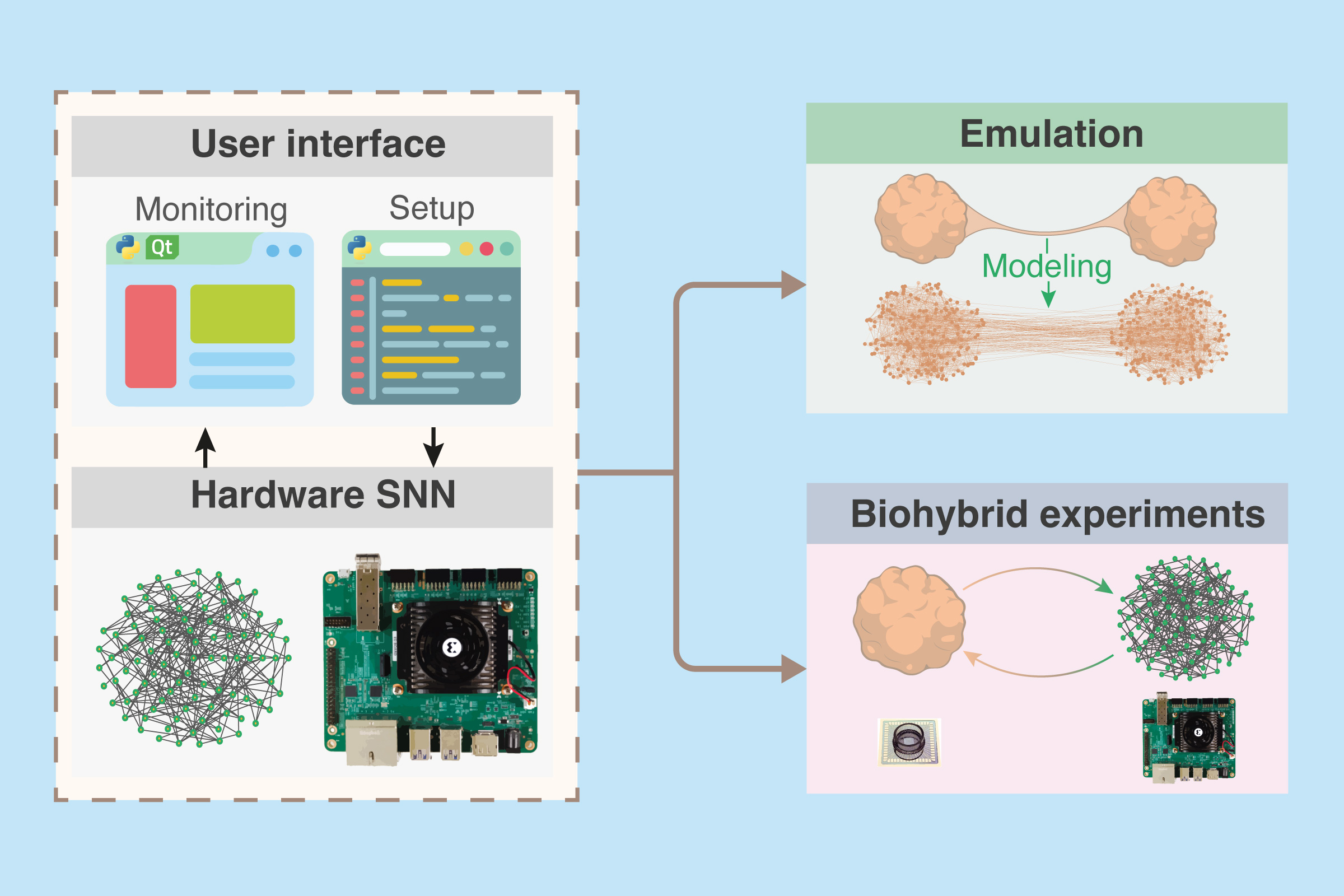Innovative System Enhances Biological-Artificial Interactions in Neurological Research

Researchers from France, Japan, and Italy have developed BiœmuS, a low-cost, flexible, and real-time biomimetic tool designed for biohybrid experiments. This system enables closed-loop interactions between artificial and living neural networks. Moreover, BiœmuS offers accessibility and ease of use, facilitating real-time emulation of neural network dynamics both in vitro and in vivo. This interdisciplinary collaboration aims to enhance bioelectrical therapeutics and neuroprosthetic development.
Conducting biohybrid experiments between living and artificial cells is necessary to develop the next generation of neuromorphic-based neuroprostheses. Toward this goal, teams from France, Japan, and Italy have developed a new tool to study closed-loop interactions in neuroscience.
Currently, pharmacological treatments for neurological disorders remain limited, driving the exploration of promising alternative approaches, such as electroceutics. Recent research in bioelectronics and neuromorphic engineering has facilitated the development of new-generation neuroprostheses for brain repair. However, realizing their full potential requires a deeper understanding of biohybrid interactions.
In a new article published in Nature Communications, the authors introduce BiœmuS, a low-cost, embedded, flexible, and real-time biomimetic tool that allows biohybrid experiments to be performed to emulate living systems in real time. This new system simplifies investigating and replicating biophysically detailed neural network dynamics, while prioritizing cost efficiency, flexibility, and ease of use.
“We showcase the feasibility of conducting biohybrid experiments using standard biophysical interfaces and a variety of biological cells, as well as the real-time emulation of diverse network configurations,” says the lead author of the study Romain Beaubois.
This embedded system offers a real-time, cost-effective, and user-friendly solution for closed-loop applications, addressing the accessibility challenges prevalent in current high-performance alternatives. Unlike server-based infrastructures or complex systems which can be expensive and difficult to integrate into experimental setups, this new solution prioritizes simplicity and accessibility. Notably, despite GPU-accelerated computing, even software alternatives frequently struggle to achieve the low latencies necessary for closed-loop applications.
“We envision our system as a crucial step toward the development of neuromorphic-based neuroprostheses for bioelectrical therapeutics, enabling seamless communication with biological networks on a comparable timescale. The embedded real-time functionality of BiœmuS enhances practicality and accessibility, amplifying its potential for real-world applications in biohybrid experiments,” explains Timothee Levi, the senior and corresponding author of the study.
“The system is a landmark achievement through our interdisciplinary collaborative efforts.” announces Yoshiho Ikeuchi, senior author of the article. “We have been collaborating and exchanging ideas over the past few years. We recently published another collaborative article in Nature Communications, in which we reported that the connection between two cerebral organoids enhances their activity and complexity. We hope to make better neuronal characterization and functionalization systems by sharing these advances and communicating them effectively with the scientific community.”
This research highlights the importance of multidisciplinary projects and international collaboration. Dr. Beaubois and Prof. Levi from the University of Bordeaux and CNRS, through the IMS and LIMMS laboratory, developed this real-time tool for emulating biological dynamics. The tool was subsequently used in biohybrid experiments targeting organoids in vitro in collaboration with Prof. Ikeuchi from the Institute of Industrial Science at The University of Tokyo and applied to rodent experiments in vivo in collaboration with Prof. Chiappalone from DIBRIS at the University of Genova.
The article, “BiœmuS: A new tool for neurological disorders studies through real-time emulation and hybridization using biomimetic Spiking Neural Network,” was published in Nature Communications at DOI: 10.1038/s41467-024-48905-x
Image: Overview of BiœmuS
Credit: Yoshiho Ikeuchi Laboratory

Associate Professor Yoshiho Ikeuchi


Comments
No comments yet.
Join by voting
How did you feel about the "Possible Future" depicted in this article? Vote on your expectations!
Please visit the laboratory website if you would like to learn more about this article.
Share